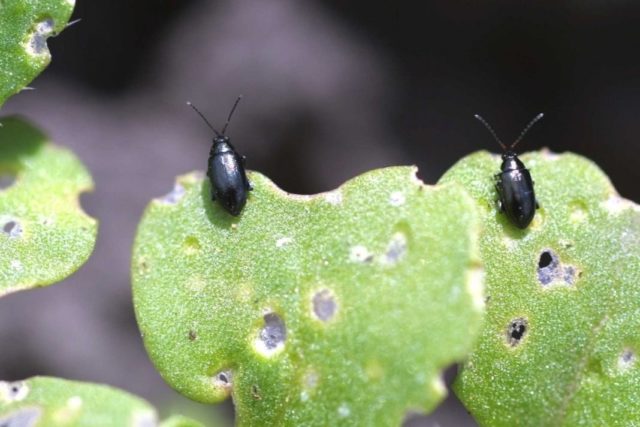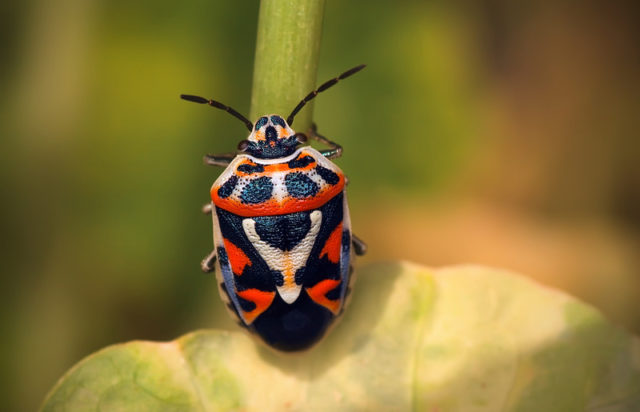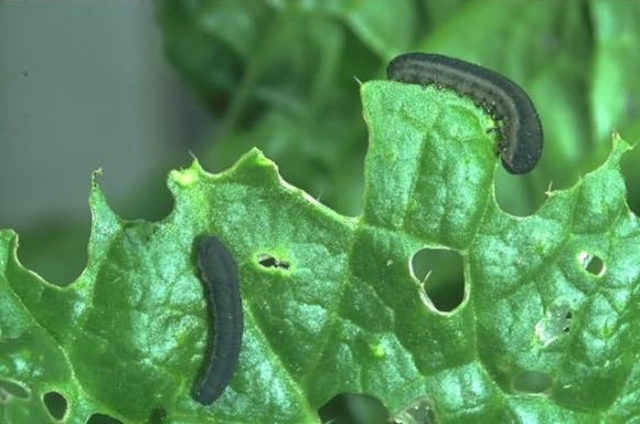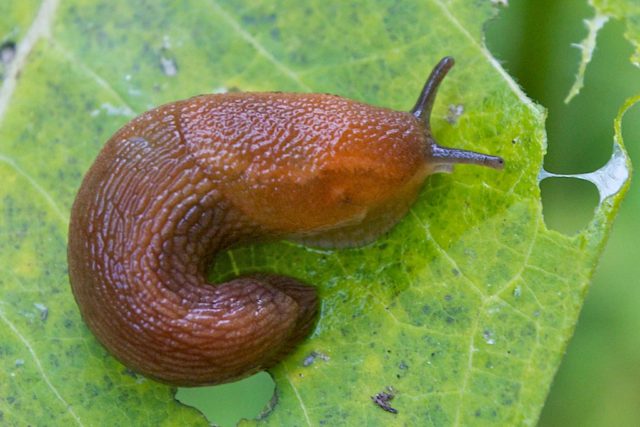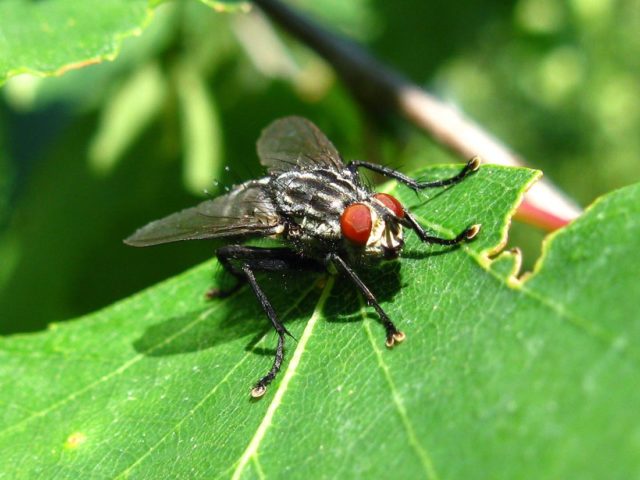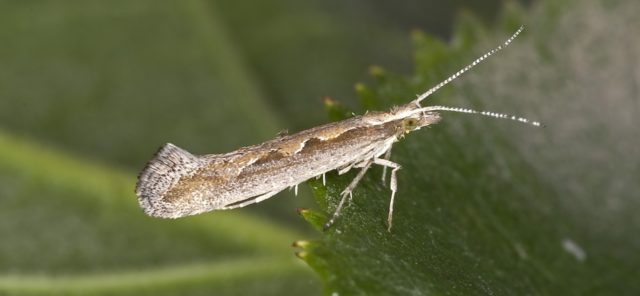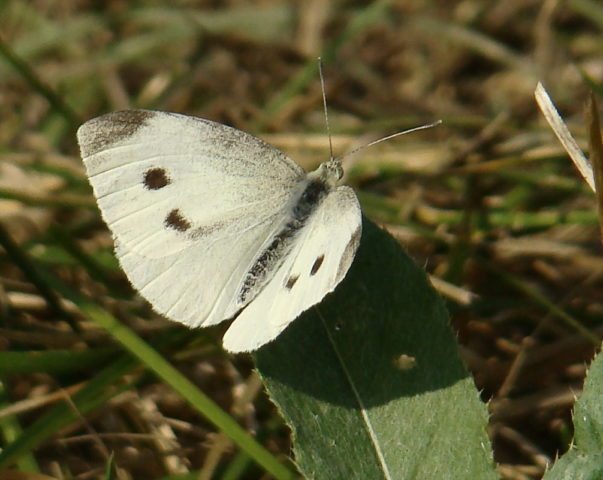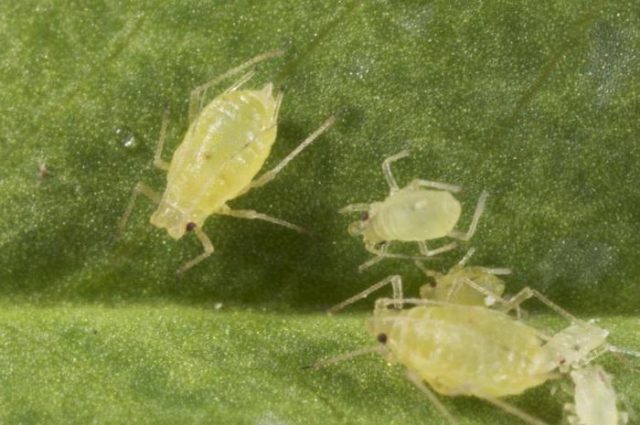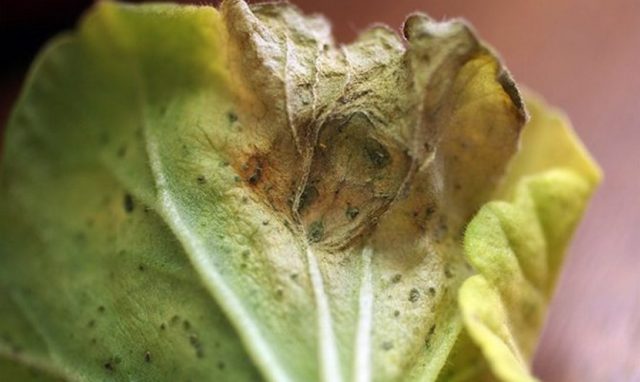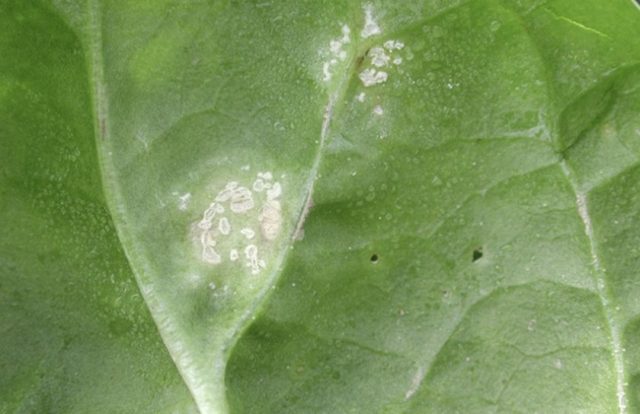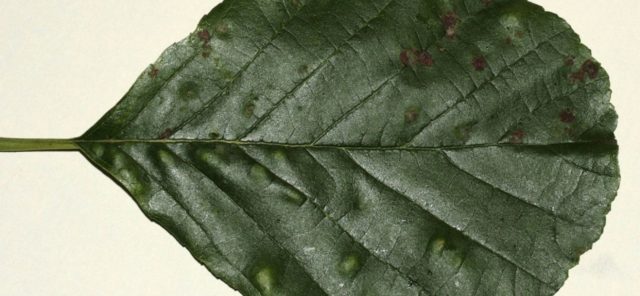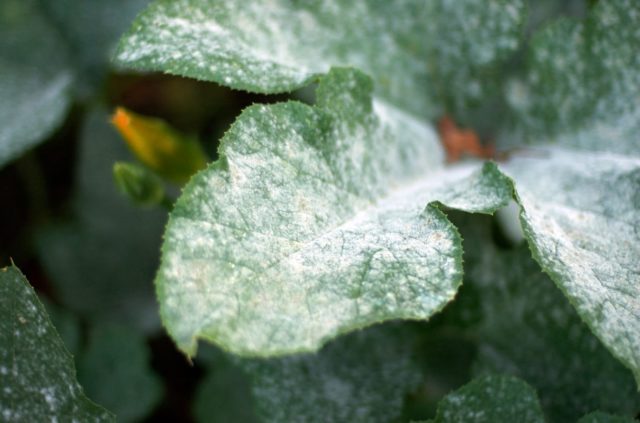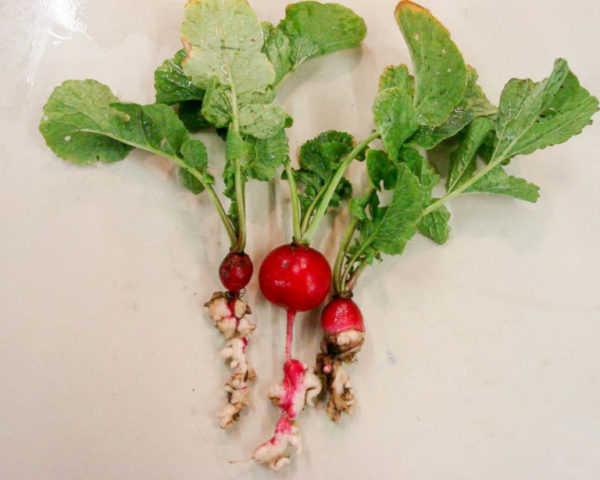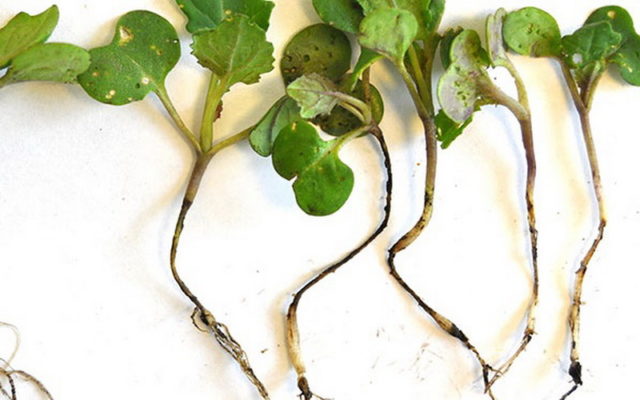Content
Many gardeners traditionally begin the spring sowing season with radish planting. This is fully justified. Radish is considered one of the most unpretentious vegetables, it grows well in cool weather and does not need a long day of light. Many varieties with different ripening periods provide the opportunity to grow this crop in a wide variety of regions. The plant has good immunity, however, pest infestations and radish diseases do occur periodically.
Radish pests and control
Radish belongs to the Cabbage (Cruciferous) family, so the same pests that attack cabbage and other plants of this group pose a threat to it. Next, photos of the most common radish pests will be given and told about the fight against them.
Cruciferous flea
A common pest that hibernates under plant debris in the upper soil layer. The cruciferous flea is a small (about 3 mm) black beetle.
Insects have excellent jumping ability, can travel long distances. The greatest danger is posed by the larvae of the pest. They emerge from the eggs laid by the female flea on the back of the leaf. The larvae eat up the leaves of the radish, literally turning them into a colander, as well as the roots of the plant.
To protect against these pests, radish processing with folk remedies is widely used. Ash in a mixture with tobacco and ground pepper helps well against flea beetles. You can treat the beds with dandelion infusion, as well as a weak solution of acetic acid. If the pest population is large, special means are used, such as Decis or Aktara.
Cruciferous bug
It is a small insect, clearly visible against the background of green foliage due to its red and black coloring. At the end of April, the bugs come out of hibernation, the females lay eggs on the leaves. Insects feed on plant juices, making pinpoint punctures in the leaves.
The leaf plate at the puncture site turns yellow and collapses. Cruciferous bugs are most harmful in hot sunny weather.
The best biological remedy for this pest is tansy, the insect does not tolerate its smell. Small populations of bed bugs can be harvested by hand. An effective way to get rid of this pest is to treat the beds with an infusion of onion peel or pharmacy chamomile. If the population of insects is significant, it is more advisable to use chemicals, for example, Belovos or Phosbecid.
Rapeseed beetle
The rape blossom beetle is a small black beetle. You can recognize it by its shiny hard wings, which shimmer very beautifully in the sun with a greenish color.The flower beetle eats away flower buds from the inside, so it is dangerous, first of all, for rapeseed crops, but it can also cause significant harm to radishes.
Folk remedies do not have any effect on the rape flower beetle, therefore, they fight this pest solely by treating the crops of radish with insecticides such as Karate or Kinmiks.
Rapeseed sawfly
It is a small winged insect. Its larvae, which resemble caterpillars, pose a danger to planting; a significant population of this pest can destroy radish leaves almost completely.
It is possible to take preventive measures against this pest already at the stage of planting radishes by soaking the seeds for 10-15 minutes in Actellik's solution. A small number of caterpillars can be scared away by treating the crops with a solution of soda or mustard. In case of large populations of pests, it is better to use insecticides, for example, Fury or Arrivo.
Slugs
Slugs are invertebrate molluscs that resemble snails without shells. They feed on both plant greens and roots, often gnawing through them.
To prevent the appearance of slugs in the beds, traps are set - small dug-in containers with beer or fermented kvass. These insects cannot move on bulk materials at all, so crops can be surrounded by a barrier of dry needles, sand or wood ash. You can drive slugs off the site by treating crops with infusions of bitter pepper or mustard. With a large number of pests, Slime-Eater or Meta preparations are used.
Cabbage fly
A cabbage fly can be distinguished from a common fly by its more elongated body and a longitudinal black stripe on the abdomen. The larvae of this insect eat up young shoots of radish, damaging not only the leaves, but also the roots.
To combat the cabbage fly and to prevent its appearance, radishes are treated with broad-spectrum insecticides, for example, Danadim Expert.
Cabbage moth
The cabbage moth is a small butterfly with a wingspan of only about 15 mm. The danger to crops is represented by the larvae of this insect, which actively feed on the greens of radish and other plants of the Cruciferous family.
When signs of the appearance of cabbage moth appear (yellowing of leaves, growth retardation, the appearance of rot), the plants must be treated with systemic insecticides, for example, Ditox.
Cabbage caterpillars
The white butterfly (cabbage) is familiar to many. For radishes and other plants of the Cabbage family, the caterpillars of this insect are dangerous.
As the first butterflies emerge, precautions must be taken to prevent the butterflies from laying eggs. For this purpose, pungent-smelling plants are planted next to the crops, for example:
- Sagebrush.
- Basil.
- Sage.
To prevent the access of butterflies, radish crops are often covered with a fine mesh. To kill flying insects, glue traps (honey water or sticky tape) are often used. To combat caterpillars, Actellik is used, treating radish crops with it.
Aphid
Aphids are green microscopic sucking insects. They are dangerous not only for radish, but also for most other garden plants.
Feeding on the cell sap of plants, the aphid makes numerous punctures over the entire surface of the leaf plate. Leaves, which regularly lack nutrients because of this, are inhibited, turn yellow and wither. Large colonies of aphids can completely kill plants.
Small aphid colonies can be washed off with a solution of laundry soap and water. The treatment of plants with infusions of herbs with a pungent smell: garlic, onions, calendula, has also proven itself well. The same plants can be planted in the neighborhood of radishes. If the populations of aphids are significant, broad-spectrum insecticides such as Inta-Vir or Confidor must be used to treat radishes against these pests.
Video about the fight against garden pests of radish:
Radish diseases and their treatment
Most radish diseases are associated either with poor quality planting material or with unfavorable growth conditions. This can be excessive moisture, which contributes to the development of various fungal diseases, or, for example, excessive acidification of the soil, which causes diseases of the root system. This chapter describes the most common radish diseases and methods for their treatment, as well as shows photos of affected plants.
Gray rot
Fungal disease that affects most garden plants. It develops in conditions of high humidity and low temperatures. It can affect various parts of the plant, appearing as brown or gray spots.
When gray rot appears, the affected plant parts must be cut off and burned. To prevent the development of the disease, crops are treated with a solution of colloidal sulfur or fungicides.
White rust
White rust (leucorrhoea) is a fungal disease that develops on radish leaves in conditions of prolonged low temperatures and high humidity. Disease is promoted by neglect of the site, the presence of weeds and plant debris. It manifests itself in the form of an oily-white bloom on the tops, then in these places the leaves turn brown and dry.
At a late stage of plant formation, the disease can also develop on root crops. Growths appear on them, while the aerial part of the plant begins to grow and branch vigorously, gradually drying out and then dying off.
If a disease is detected, the affected leaves must be immediately cut off and burned. For prevention and treatment at an early stage of infection, plantings are treated with solutions of colloidal sulfur, potassium permanganate; at a later stage of the development of the disease, it is more expedient to use fungicides Ridomil-Gold or Folikur. Often, shavings of laundry soap are added to the treatment solution. Such a composition wets plants better and does not wash off with water longer.
Radish Mosaic
Mosaic refers to viral plant diseases. Not only radishes are affected by it, but also a large number of other horticultural crops. The disease is very dangerous because there are no cures for it. All infected plants must be destroyed by burning. The mosaic can be detected by the characteristic spots of light green or light green color on the leaf plate, often in the form of various geometric shapes. The affected leaves are deformed, curled, gradually darken and die off.
To prevent the appearance of a mosaic, it is necessary to inspect and reject the seed material. As a prophylactic agent, the seeds can be kept in a solution of Horus or Topaz special agents. The control of sucking insect pests that carry the mosaic virus is also of great importance for the prevention of morbidity.
Powdery mildew
Powdery mildew is a well-known fungal disease that affects not only radishes, but also many other types of garden plants. The causative agent of the disease is soil fungi, so infection usually starts from the lowest leaves. It manifests itself in the form of a white or light gray powdery coating on the leaves, which eventually turn brown and die off.
The disease progresses in conditions of high temperature and humidity.Sharp temperature fluctuations are also an unfavorable factor contributing to the development of the disease. To prevent the appearance of powdery mildew, it is usually enough to treat once a week with a solution of colloidal sulfur or folk remedies: an infusion of ash or yogurt diluted with water. During infection, the treatment of radish crops with copper-containing preparations, such as an aqueous solution of copper sulfate or Bordeaux liquid, is traditionally used.
Downy mildew
Peronosporosis, or downy mildew, is a fungal disease that develops on the leaves of radish and other plants. Downy mildew can be recognized by small light green spots on the leaf plate, which gradually turn yellow and then turn brown. At the same time, on the reverse side of the leaf, a spore pad is formed in the form of a gray velvety bloom.
For the prevention of peronosporosis, plantings are sprayed twice with a solution of boric acid or by means such as Rizoplan or Pseudobacterin. A good result is obtained by processing plants with folk remedies, for example, an infusion of wormwood or garlic.
Keela
Keela is a specific fungal disease that is characteristic only of plants of the Cruciferous family. It is quite difficult to visually detect the disease during the growth process, since only the underground part of the radish is affected. White growths form on the root crop, which then turn brown and rot. The root ceases to fulfill its function, the movement of nutrients slows down and then stops. The plant lays down and dies. The photo shows a radish affected by this disease:
Keela is not treatable. The site where this disease was noted is not recommended for sowing cruciferous plants for 8-10 years, setting it aside for potatoes or tomatoes. The disease often develops in conditions of high humidity on heavy clay soils, as well as in conditions of too high acidity of the soil. Therefore, the prevention is an increase in soil looseness by adding sand, wood ash, as well as its deoxidation with dolomite flour or milk of lime.
Blackleg
It is a fungal disease caused by soil fungi. It usually develops in the lower part of the stem. Within a short time, the stem becomes thinner and completely rotted, after which the plant simply falls to the ground and dies.
Blackleg is not treatable. Infected plants must be immediately removed from the garden and burned. It is possible to prevent the development of the disease by observing all the rules of agricultural technology, as well as using high-quality planting material.
Vascular bacteriosis
Bacteriosis usually affects already adult plants that are at the stage of root formation. This disease can be detected by the color of the leaves. In the affected areas, the veins turn black, the leaf plate around them turns yellow and over time begins to crumble. The disease is carried by insects and can also be spread through rainwater.
Bacteriosis at its early stage of development is treatable. At this stage, it is possible to process the radish with Phytolavin or Binoram, however, if the plant is severely damaged, it will not be possible to save the plant, it must be destroyed. Many gardeners, as a prevention of this disease, before planting, soak radish seeds in hot water at a temperature of 45-50 ° C for 15 minutes.
Signs of diseases and pests of radish
Most diseases, as well as the presence of pests on radish plantings, can be detected visually. Such signs are violations of the color of the leaves, their deformation, the appearance of holes in the leaf plates, etc. It is necessary to inspect the plantings regularly, many diseases can be cured if they are detected at an early stage.
What to do if radish leaves are in a hole
If numerous small holes appeared on the leaves of the radish, then, most likely, cruciferous fleas could have made them.Larger holes with jagged edges may indicate the appearance of caterpillars of winged insects, such as the white-faced butterfly or cabbage moth. If the edges of the holes are brown, the material of the leaf plate rots and crumbles, then there is a high probability of the development of fungi on the plants.
Why do radish leaves turn yellow
Yellowing of radish leaves is not always associated with disease. Perhaps the plants simply do not have enough sunlight. The yellow color of the leaves can be associated with a lack or excess of moisture. If the yellowing is accompanied by wilting of the plant, it may be because the keela is causing the nutrient to be disrupted.
Another reason for yellowing of radish leaves can be sucking insects (aphids or bugs), a large population of which can significantly depress crops.
Why does radish turn black inside
Blackening of radish roots is usually associated with disease. One of the reasons is downy mildew, or downy mildew. At the initial stage, the disease affects the leaves, and then the fungus spreads to the entire plant. The root crop turns black and rots. However, not only diseases can lead to blackening of radishes. Quite often, this phenomenon is the result of improper care, in particular, rare but abundant watering. Another reason for the blackening of the radish root crop can be the increased acidity of the soil.
Why do radish leaves dry
Drying leaves of radish may indicate the defeat of the plant by powdery mildew. When choosing seeds for planting, you should pay attention to varieties that are resistant to this disease. In addition to the disease, the usual lack of moisture can also cause the leaves to dry out. Therefore, watering the radish beds should be regular, especially in hot weather.
Prevention measures
To protect radishes from pests and diseases, it is necessary to carry out a number of measures in a timely manner, both with the plants themselves and with the area where this crop is grown.
- The place for the beds must be prepared in advance. When digging, add sand if the soil is not loose enough. Add dolomite flour or slaked lime if acidity is higher than normal.
- Inspect and discard radish seeds.
- Before planting, soak the planting material in a disinfecting solution.
- After planting, ensure that the plants are well cared for. Timely watering of radish, weeding, loosening of the soil.
- After the emergence of shoots, cull the shoots, removing thickening and weak plants.
- At all stages of growth and development, regularly conduct observations, promptly taking measures to remove diseased plants. If necessary, carry out the processing of radish plantings with special preparations.
- Timely carry out measures to protect, and, if necessary, treat the radish from insect pests.
Conclusion
Radish diseases are most often the result of improper care or the use of poor-quality planting material. Despite the fact that the plant is considered quite unpretentious, it requires some care to get a good harvest. It is simple enough, so you shouldn't neglect it.
